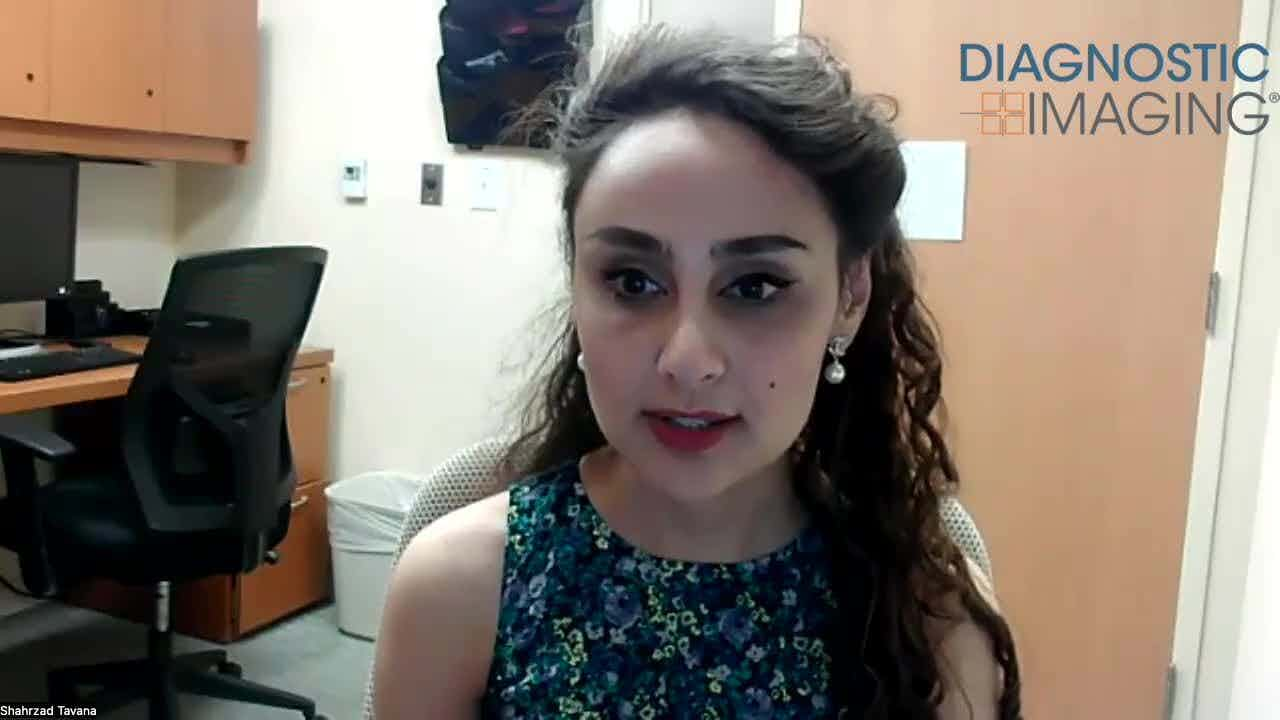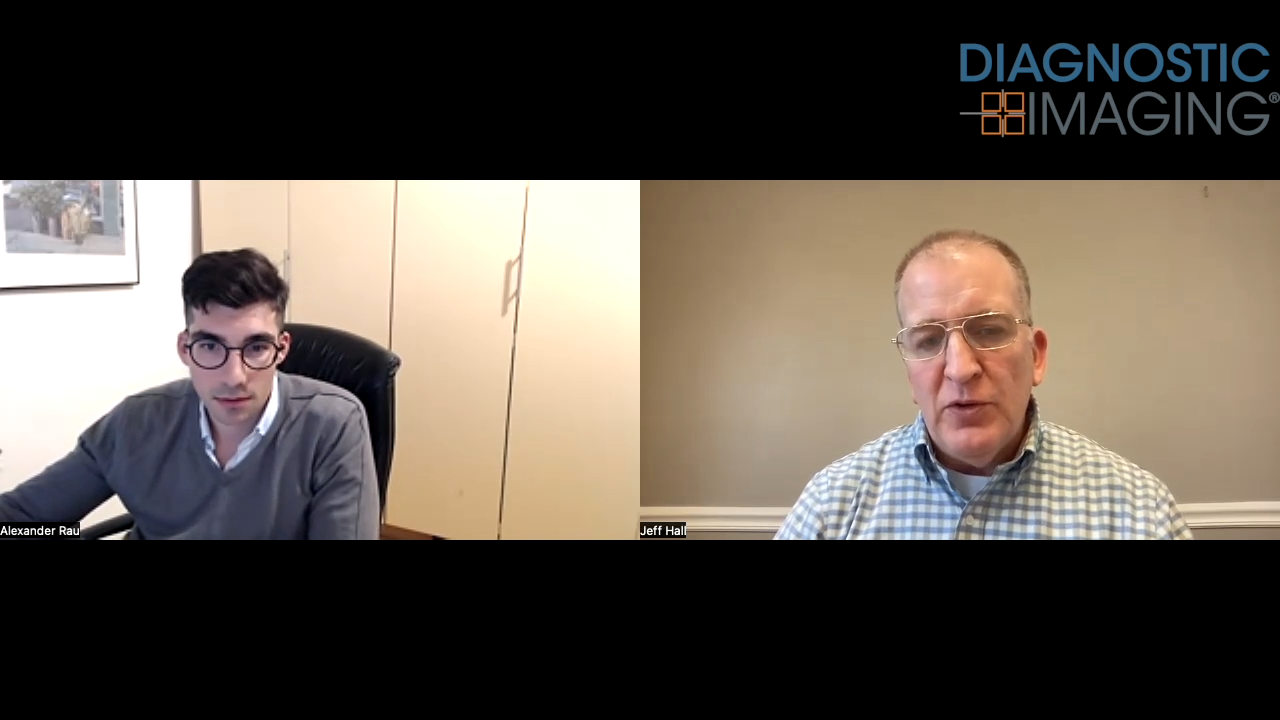MR technique speeds acquisition, improves contrast for amyloid plaque
Jeffrey Luci, Ph.D., would be the first to admit he is having a busy year. Having attained a faculty position at Vanderbilt University at the end of his National Institutes of Health research fellowship, the former University of Iowa chemistry grad student is now immersed in preparations for his forthcoming wedding. The list of last-minute details may seem endless, but at least the ring is taken care of, thanks to his $1000 award from the RSNA.
Jeffrey Luci, Ph.D., used a common industrial chemistry technique to help MR better image Alzheimer's disease.
Jeffrey Luci, Ph.D., would be the first to admit he is having a busy year. Having attained a faculty position at Vanderbilt University at the end of his National Institutes of Health research fellowship, the former University of Iowa chemistry grad student is now immersed in preparations for his forthcoming wedding. The list of last-minute details may seem endless, but at least the ring is taken care of, thanks to his $1000 award from the RSNA.
While Luci's heart may have ruled where he spent his winnings, matters more cerebral led to his 2005 RSNA Research Trainee Prize. His award-winning study evaluated the capacity of T1ρ-weighted MRI to detect amyloid plaques in a mouse model of Alzheimer's disease. This imaging technique, which provides tunable T2-like contrast via modulation of spinlock power, is used widely in industrial chemistry. It could further experimental and clinical research into neurological conditions such as Alzheimer's.
The study pitted T1ρ-weighted imaging against T2-weighted MRI, the current gold standard for imaging Alzheimer's plaques. Spin-echo T2-weighted MRI generally yields high-resolution images of amyloid plaques, given sufficient time. Acquisition times can be four to eight times shorter if fast spin-echo sequences are used, but image blurring results.
“The blurring is of the order of the size of the plaques, so you can't see them very well,” said Luci, now an instructor in radiology and radiological sciences at Vanderbilt. “With T1ρ-weighted MRI, we acquire data in a different order, so there is a narrower blurring function associated with fast spin-echo imaging.”
The comparison test was conducted on four male transgenic mice bred to grow amyloid plaques spontaneously. The animals were imaged at 9.4T with T2- and T1ρ-weighted MRI using spin-echo and fast-spin echo sequences. Results showed that hypointense signals from the amyloid plaques were seen best on T1ρ-weighted spin-echo MRI. Fast spin-echo T1ρ-weighted imaging had comparable clarity to spin-echo T2-weighted MRI.
MRI of the same brain slice of an aged transgenic mouse. A: T2-weighted spin-echo image acquired in 42.7 minutes. B: T1ρ-weighted fast spin-echo image acquired in 10.7 minutes. Note more conspicuous appearance of hypointense spots along the subcortical rim.
“The spin-echo T2-weighted imaging took around 50 minutes. We had very similar results in terms of contrast-to-noise for T1ρ-weighted MRI in seven or eight minutes,” Luci said.
The added contrast gained from T1ρ-weighted imaging could pay off in one of two ways. Radiology researchers could cut their acquisition times for the same image quality or push for greater sensitivity.
“If you were interested in imaging the later stages of disease, you could acquire the images more quickly. If you were interested in onset mechanisms and needed to detect small plaques, you could acquire images at the same speed as T2-weighted imaging but gain more reliable data,” Luci said.
The next stage will be to realize 3D data acquisition. Results presented at the RSNA meeting concerned T1ρ-weighted data collected one slice at a time. But this approach gives no indication of whether the selected slice represents the true state of disease. Acquisition of 3D data sets is essential if T1ρ-weighted MRI is to give a comprehensive picture of plaque burden. The technique could then become a practical option for in vivo longitudinal studies to monitor disease progression and/or treatment effects.
Clinical application of T1ρ-weighted MRI has already come one step closer following the study's recognition at the RSNA meeting. The project's high profile has led directly to collaborations with clinical radiologists at Vanderbilt, Luci said. While some inquiries have naturally come from neuroradiologists, sports imaging practitioners have also expressed an interest in the technique as a means of visualizing cartilage.
Luci's whirlwind year looks likely to settle down once he has tied the knot. He is looking forward to putting down roots at Vanderbilt for at least the next 10 years, continuing to work with his mentor, John Gore, Ph.D., director of the Vanderbilt Institute of Imaging Science.
“The institutional commitment here to our research is outstanding. There aren't too many other places where you would find such a wide variety of imaging scientists working together under the same roof,” Luci said. “A bigger aspect is the camaraderie. Other places I know of have been incredibly cut-throat, competitive, and secretive. People here are enthusiastic and supportive and work together to solve problems. That sort of environment and attitude suits me better.”
Emerging AI Algorithm Shows Promise for Abbreviated Breast MRI in Multicenter Study
April 25th 2025An artificial intelligence algorithm for dynamic contrast-enhanced breast MRI offered a 93.9 percent AUC for breast cancer detection, and a 92.3 percent sensitivity in BI-RADS 3 cases, according to new research presented at the Society for Breast Imaging (SBI) conference.
Could AI-Powered Abbreviated MRI Reinvent Detection for Structural Abnormalities of the Knee?
April 24th 2025Employing deep learning image reconstruction, parallel imaging and multi-slice acceleration in a sub-five-minute 3T knee MRI, researchers noted 100 percent sensitivity and 99 percent specificity for anterior cruciate ligament (ACL) tears.
New bpMRI Study Suggests AI Offers Comparable Results to Radiologists for PCa Detection
April 15th 2025Demonstrating no significant difference with radiologist detection of clinically significant prostate cancer (csPCa), a biparametric MRI-based AI model provided an 88.4 percent sensitivity rate in a recent study.










